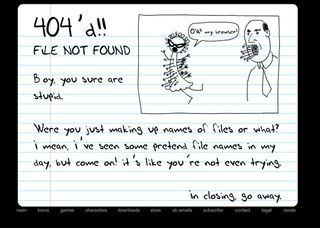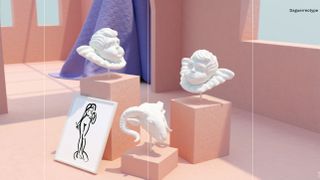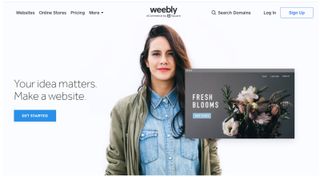04. Focus on delight
One of the reasons a lot of designers miss the top part of the pyramid is because it's difficult.
Knowing whether something is usable is relatively easier — a test can determine if it works, and some troubleshooting options can solve the problem if it doesn't. But how can you determine if your interface creates an emotional response or not? That's a little trickier to test.

Aarron Walter, UX Director at MailChimp, elaborates on the importance of emotion in design, and how to manufacture it. There are in fact a handful of helpful tips discovered by the experts that can guide you into developing the UX your users wants:
- Appealing Visuals — While a delightful mascot may seem cheesy to some, its appeal to users is well-known. If you're shying away from something as silly as the bird from the Feathers app (above), you can still draw an emotional response from a pleasing visual, like the TapBots apps.
- Discoverables — People generally enjoy surprise treats more than expected ones. Photojojo uses unexpected and cute animations to infuse a little fun into the experience; for example, clicking the "Add to Cart" buttons creates a "+1" balloon that floats up to the cart icon in the upper-right corner.
- Trust — This should go without saying, but if users don't trust you — i.e., product pictures don't match descriptions — they will turn off emotionally. It's best to be honest with your content and media, albeit with your best foot forward. Like we previously discussed, personality and social proof are also some of the factors that build trust.
- Reciprocation — When the user feels like they were done a favor, they're more likely to return the favor. If your design permits, try to give away small gifts (like a sample chapter for a book as designer Steven Bradley does for his e-book, or free newsletters) in exchange for a link, referral, or purchase.
- Personalization — When your interface responds to a user without them disclosing information, you can create an immediate rapport. You can implement this on a complex level (like Quora does with its recommended content) or with a simple touch like a "Happy [day of the week]" message.
- Novelty Surprises — As we described in Volume 1, the core functions themselves should be predictable (e.g. a popup form shouldn't redirect users after clicking "OK"). Surprise only works to your advantage when it adds delight rather than affect the function.
For example, when you try to type in a fake email on FunnyOrDie, the interface becomes quite sarcastic. It's a surprising reaction that matches the brand's irreverent content.
Just as with human interaction, the more personality you show, the more it will polarize you. This means if you make a statement like, "Fantasy is better than sci-fi," fantasy fans will love and appreciate your site much more, but you will lose some sci-fi fans.
While eliciting an emotional response can occasionally backfire, it's better to stir something in your users than nothing at all.
05. Apply delight to transform bad experiences

One last note before we wrap up: designing for human interactions can do more than just create an enjoyable UX, it can also reduce the amount of displeasure for unavoidable errors.
Get the Creative Bloq Newsletter
Daily design news, reviews, how-tos and more, as picked by the editors.
Smart websites like to have fun with their 404 pages, as you can see in this list. When done right, even error messages can delight users.

When we play to basic human needs (such as humor/fun), our interaction design can even transform negative experiences into positive ones.
Takeaways
Seductive design isn't about tricking your user into behaving a certain way. It's about getting them to want to behave that way on their own.
You shouldn't be deceitful or manipulative — it's just a matter of creating an interface that's enjoyable enough so that users want to use it. Words and phrases like "engaged" or "in the flow" are just synonyms for "having fun." If you want users to keep coming back, you need to incorporate the foundations of any good human relationship: be helpful, reliable, understanding, and interesting.
Our goal is to help you understand that interaction design isn't just about creating interfaces. It's about mastering human-to-human design, because your goal is to make the black box of technology feel as empathetic and alive as possible.
To learn more, download the free e-book Interaction Design Best Practices: Time & Behavior. Visual case studies are included from 30+ companies including Google, AirBnB, Facebook, Yahoo.
Words: Jerry Cao
Jerry Cao is a content strategist at UXPin — the wireframing and prototyping app — where he develops in-app and online content for the wireframing and prototyping platform. To learn how to use mockups of all types and fidelities, check out The Guide to Mockups.
Like this? Read these!
- Create an app prototype with Pixate
- How to build an app: try these great tutorials
- Free graphic design software available to you right now!




